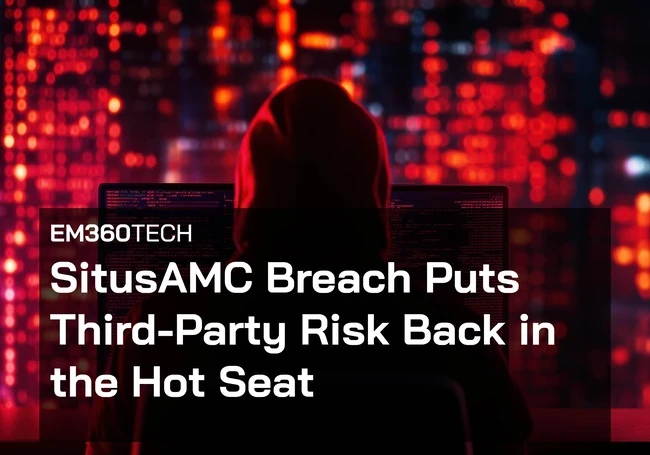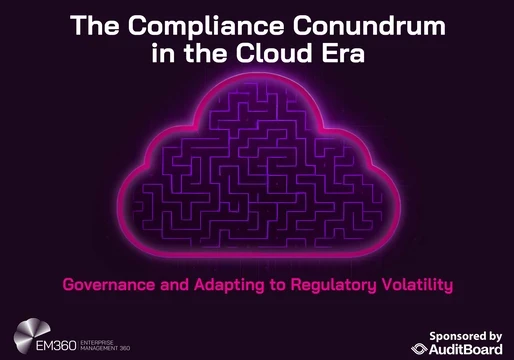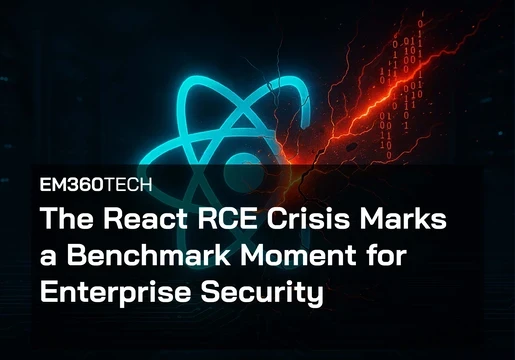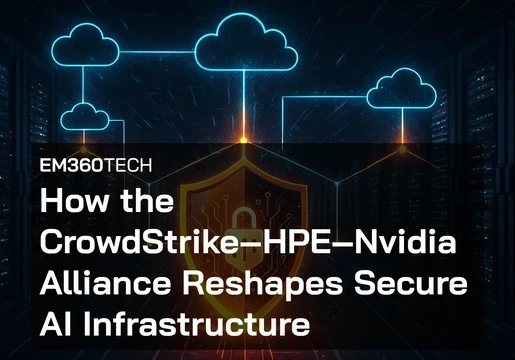When a niche vendor most people outside the industry have never heard of suddenly appears in headlines next to JPMorgan, Citi, and Morgan Stanley, something has gone very wrong in the background.
That is what happened when mortgage and real estate finance provider SitusAMC disclosed that it had suffered a cyberattack on 12 November 2025. The incident involved unauthorised access to its systems and the theft of internal data. The company has since said the attack is contained, its platforms are fully operational, and that no encrypting malware was used. What it has not yet been able to do is fully quantify how much sensitive information was taken or how many customers across its client base are exposed.
For the banks that rely on SitusAMC for mortgage processing and related services, the breach is not a theoretical problem. It is a live question about where their data went, who may now have it, and what that could mean over the coming months.
The bigger lesson is not limited to one vendor. It is that third-party ecosystems have quietly become the real front line of financial-sector cyber risk, and that many organisations are still most exposed where their visibility ends. To start dealing with that honestly, executives need a clear view of what this breach actually exposed and the blind spots it has brought into focus.

What the Breach Actually Exposed
SitusAMC’s own statements make one thing clear. This was not a noisy ransomware attack that locked up systems and flashed a countdown clock. It was a data theft.
The company confirmed that attackers accessed and removed corporate client information, including accounting records and legal agreements tied to some of its customer relationships. It also acknowledged that certain data relating to clients’ customers may have been affected, although the investigation is still working through exactly what that means in practice.
Crucially, SitusAMC has said that no encrypting malware was involved and that its services remain operational. From an availability point of view, the lights are still on and the workflows are still running. From a confidentiality point of view, the situation is very different. Data that should never have left controlled environments is now in the hands of unknown actors.
For executives, the most uncomfortable part is the uncertainty. Until the forensic team can say with confidence which systems were touched, which records were exfiltrated, and which banks’ customers appear in those datasets, there is a gap between risk and reality. That gap is where:
- Data-mapping weaknesses are exposed.
- Notification timelines become difficult to manage.
- Regulators and customers start asking pointed questions about who knew what, and when.
When a vendor is still qualifying the scope weeks after discovery, it often reflects the same underlying problem many enterprises face internally. If you cannot see your data clearly, you cannot secure it clearly.
Why Major Banks Are Concerned About Downstream Exposure
The reason this incident has rattled some of the largest names in US banking is not only that a vendor was breached. It is that this particular vendor sits close to the heart of high-value workflows.
SitusAMC supports mortgage and real estate finance processes for a wide range of institutions. That role places it in the data path for loan applications, servicing data, valuations, and related legal documentation. These records are rich with identity information. Think Social Security numbers, income details, addresses, and signatures, combined with financial histories and asset information.
Attackers do not need to disrupt operations to turn that into leverage. With enough identity-rich data, they can:
- Build detailed profiles for targeted fraud and social engineering.
- Feed synthetic identity schemes that blend real and fabricated attributes.
- Tailor highly convincing phishing or vishing campaigns that reference real loans or properties.
From a security leadership point of view, this is why there is so much focus on downstream exposure rather than the vendor’s uptime. If data stolen from a processor is used to attack customers, staff, or other partners months later, the original incident will look less like a contained event and more like the opening move in a longer campaign.
There is also the pattern to consider. Third-party incidents have been rising steadily, and financial institutions with complex vendor stacks know that they are only ever a few hops away from a compromised supplier. Multi-tier vendor chains, cloud-based platforms, and interconnected mortgage ecosystems all widen the surface area that needs to be defended.
CISOs and CIOs watching this breach unfold are therefore tracking three things closely:
- How sensitive the stolen documents turn out to be, especially where they relate to customer identity and collateral.
- How long it takes to get reliable clarity on compromised datasets, which will shape their own incident-response posture.
- Whether regulators start signalling a firmer stance on vendor oversight and data governance in the mortgage and real estate finance space.
The Blind Spots This Breach Brings Into Focus
Incidents like this do not only expose weaknesses in one organisation’s defences. They tend to illuminate the blind spots that many enterprises share.
Visibility
Most organisations cannot confidently list which vendors hold their most sensitive data, nor how far that data has spread into fourth-party and platform relationships. They know how critical a vendor is for operations, but not always how critical it is for data exposure.
Contracts
Service level agreements often focus heavily on uptime and response times, and far less on forensic access, breach notification detail, and joint incident handling. When something goes wrong, the lack of precise obligations around evidence, logs, or cooperation can slow down the entire response.
Data-flow
Vendor environments frequently hold more data, for longer, than the client realises. Legacy uploads are not removed. Test copies of production datasets are kept “just in case”. Systems fall outside the scope of regular audits because they are seen as the vendor’s internal concern.
Operations
When a vendor can truthfully say “our services remain operational”, it is reassuring, but it is not the same as saying “your risk is contained”. A pure data-exfiltration attack leaves processes intact while planting a long-tail threat that may only surface later in fraud metrics, customer complaints, or regulator enquiries.
Leadership
Boards often receive vendor risk as a slide in a quarterly IT report rather than as part of the wider enterprise risk conversation. That framing encourages a checklist mindset instead of an ongoing dialogue around concentration risk, data governance, and accountability.
The executive takeaway is simple. Third-party cyber risk is now a structural issue that sits at the intersection of technology, legal, finance, and strategy. Treating it as a narrow security control problem will not be enough.
What Leadership Teams Should Do Before Their Next Board Update
The SitusAMC breach is already part of the mental backdrop for many financial services boards. Before it shows up as a direct question in your next update, it is worth tightening your own stance.
Work through these actions with your leadership team and key owners across security, procurement, legal, and operations.
- Verify exposure: Map which internal datasets you share with your most critical vendors, where those records are stored, and who has access to them. Pay particular attention to identity-rich financial data, such as loan files and KYC records.
- Strengthen monitoring: Confirm that vendor access to your systems is monitored with the same care as internal privileged accounts. Continuous monitoring of access credentials, privileged actions, and unusual data movement should be the norm, not a project.
- Reassess vendor tiering: Revisit how you classify third parties. Any supplier that processes sensitive customer or financial data, even if it feels “back office”, should be treated as a top-tier critical vendor for risk purposes.
- Interrogate contracts: Review your key agreements with an eye on breach handling. Look for clarity on notification timelines, information to be provided, audit rights, data retention and deletion, and the responsibilities each party has in a joint investigation.
- Stress-test your resilience: Run through at least one exercise that assumes a critical vendor suffers a data breach affecting your customers. Test your escalation paths, customer communications, regulator engagement, and internal decision-making.
- Prepare the board narrative: Be ready to explain your current exposure, the maturity of your third-party risk programme, and how you are responding to the latest wave of vendor-related incidents. Give the board concrete questions they should be asking, rather than waiting for them to form their own from headlines.
These are not one-off clean-up tasks. They are part of how a modern financial institution builds and maintains trust when so much of its value chain depends on other people’s systems.
What This Breach Signals for the Wider Financial Sector
If you zoom out from the details, the SitusAMC incident is another reminder that financial institutions are only as strong as the least mature vendor in their ecosystem.
Three signals stand out.
First, data-exfiltration attacks are likely to dominate high-value sectors. Locking systems is noisy and disruptive. Quietly removing sensitive datasets from behind well-defended perimeters, through vendors that do not always have the same level of protection, is often more attractive to attackers who play the long game.
Second, regulatory and insurance scrutiny will continue to tighten around third-party risk management. Supervisors have already been emphasising accountability for outsourcing and operational resilience. High-profile vendor breaches that touch major banks will only accelerate expectations for better data governance, more transparent reporting, and more robust contractual terms.
Third, concentration risk is now clearly a cybersecurity concern, not just a business continuity one. When hundreds of institutions rely on the same handful of processors for key functions, a single compromise can ripple widely through the system. Over time, that may influence how regulators view vendor clusters and where institutions choose to diversify or insource.
For financial leaders, the question is no longer whether vendor-chain incidents will happen. It is how often, how visible, and how prepared their organisations will be when they do.
Final Thoughts: Vendor Risk Is Now a Strategy Conversation
The SitusAMC breach is not simply another entry on the growing list of security incidents. It is a clear reminder that organisations are most vulnerable where their visibility ends, and that those blind spots often sit inside third-party ecosystems.
Data-exfiltration attacks at critical vendors create risk that lasts long after the initial investigation closes. Multi-tier ecosystems extend exposure far beyond direct contracts, into a web of fourth parties and shared platforms. Boards and leadership teams cannot afford to treat those realities as a narrow technology problem. They belong in the same conversations as credit risk, liquidity, and regulatory change.
The real test for financial institutions now is whether they treat vendor-chain security as operational housekeeping or as part of core enterprise strategy. The ones that choose the latter will be better placed to understand their exposure, respond with confidence, and maintain trust when the next supply-chain breach hits the headlines.
For leaders rethinking their security posture after another supply-chain wake-up call, EM360Tech continues tracking the signals shaping modern resilience, from sector-wide breaches to the tools and frameworks helping organisations stay ahead of the next disruption.







Comments ( 0 )